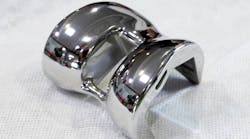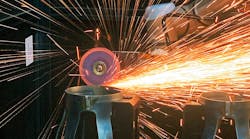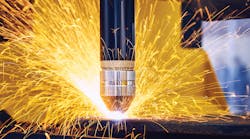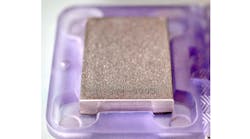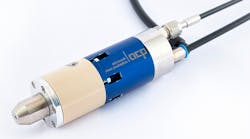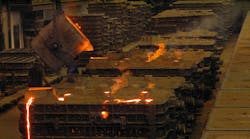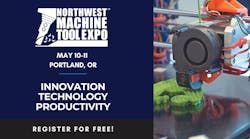The rapid technological developments in the automotive industry also have far-reaching consequences for surface treatment of component parts. This is true for the components used in alternative drive systems and self-driving cars, but also for parts for conventional drive systems with internal combustion engines. Optimal finishes ensure less friction losses, lower fuel consumption, and lower emissions.
In addition, parts with premium surface conditions minimize vibration and wear on components exposed to high loads. Moreover, the use of lightweight materials – an ongoing development in automotive design and production – is an important factor, irrespective of the drive design. All these factors underline the importance of surface finishing.
The number of aluminum, magnesium, and 3D-printed components is growing. Individualized and customized automobiles are another reason that component surfaces must meet completely new optical and haptic demands. A further trend is the need to make the manufacturing operations more flexible and reduce the labor costs.
As a competent, long-term partner to automakers and their suppliers, Rösler Oberflächentechnik GmbH has been working to provide suitable equipment and processes. It has innovated surface finishing solutions for mass finishing, shot blasting, and post-processing of 3D-printed components. As such they help the customers to organize their manufacturing operations in a sustainable and resource-saving manner.
Mass finishing for EV parts. Vehicles driven by batteries or fuel cells and plug-ins contain a large number of electrical and mechatronic components – including connectors, circuit boards, and busbars. To transfer the power they must handle high electric volumes. To function well, they must be free of burrs and perfectly clean. For this surface finishing task, mass-finishing technology is a highly effective and economic solution. By fine-tuning the equipment and the consumables (media and compound), all developed and produced inhouse, Rösler ensures that the required surface finishes are consistently achieved within short cycle times.
Mass finishing systems are also used to finish copper bars and various kinds of stamping. Copper bars are increasingly employed as winding material for rotors, whereas bent and stamped components are used for all kinds of housings.
Reduced friction and wear. Friction not only increases wear and fuel consumption; It generates unwanted noise emissions, vibrations, and increased temperatures. So, minimizing friction is an important goal for components in vehicles that are powered by batteries or combustion engines. Optimal surface smoothing of components such as gears, cam segments, piston rings, and camshafts are achieved with fully automatic mass-finishing systems, for example, drag and surf finishers. The component surface is not only smoothed by removing roughness peaks and valleys. The components are completely deburred, too. Such multi-function finishing operations in a single process generate significant cost savings and repeatable results.
In-line shot blasting. A major challenge for battery-driven vehicles is to reach a maximum driving range before recharging. In vehicles with combustion engines the fuel consumption and the emissions must be lowered. This leads to an increasing use of nonferrous metals like aluminum and magnesium. These materials are used to produce stator carriers, housings, drive components, axle clamps, and wheel holders as sand castings, diecastings, and injection moldings. Following the shaping process these components must be de-sanded, deburred, and their surfaces must be homogenized. For these tasks Rösler has developed compact swing-chamber shot-blast machines with automated workpiece handling. Because these machines have small footprints, they can be easily integrated into manufacturing lines, thus allowing inline, continuous flow processing.
AM for volume production. In the past years 3D printing was primarily used for rapid prototyping and production of small pilot runs. Now, additive manufacturing is increasingly used for volume production. Recent research projects that the production of 3D printed standard automotive parts will reach a sales volume of $9 billion by 1929, up from $1.39 billion in 2019. This explosive development has become possible through improvements in printer technology, better printing methods, and new, improved materials.
Among the numerous benefits of 3D printing is the high design freedom resulting in lighter components with more complex shapes. In addition, 3D printing allows customization of exterior and interior components, an important aspect for product differentiation.
However, successful use of modern print systems for volume production depends not only on sustainable print processes and lower costs per piece; it equally depends on economical and consistent post-processing of 3D-printed components.
Consistent cleanliness. The cleanliness of components has become another important quality criterion. The electric and electronic components in EVs in particular are subject to the most stringent cleanliness requirements. Rösler offers a range of belt, drum and chamber washing machines that can be easily linked with mass finishing, shot-blasting, and post-processing systems, and these machines can be adapted to the entire process for optimal cleaning results.
When the washing machines are linked with mass-finishing systems, the process liquids can be easily mixed. Depending on the workpiece shape, such a mix-up can be minimal. However, to ensure a safe operation of the entire line, it is essential that both process liquids are compatible and are not negatively impacting the process results. Rösler offers eco-friendly compounds that are precisely adapted to the mass finishing and washing operation, guaranteeing a high degree of process stability.
The different requirements for new components, materials, and manufacturing methods demand, among other things, new or adapted finishing processes. With experience and the know-how gained from projects in aerospace, automotive, medical engineering, machinery building, and more, Rösler is well qualified for these tasks.
Custom engineered automation, digitization. Rösler specialists develop automation solutions according to the individual customer requirements and the existing manufacturing environment. These include not only workpiece handling but also the integration into new or existing manufacturing lines. Monitoring processes using matrix code or visual systems also can be supplied.
Rösler also offers software and hardware packages for digitization of mass finishing and shot blasting operations. For shot blasting equipment this includes primarily the operating parameters that determine blast cleaning quality and influence the equipment maintenance. For mass finishing operations the focus is frequently on the monitoring and maintenance of process water recycling systems.

